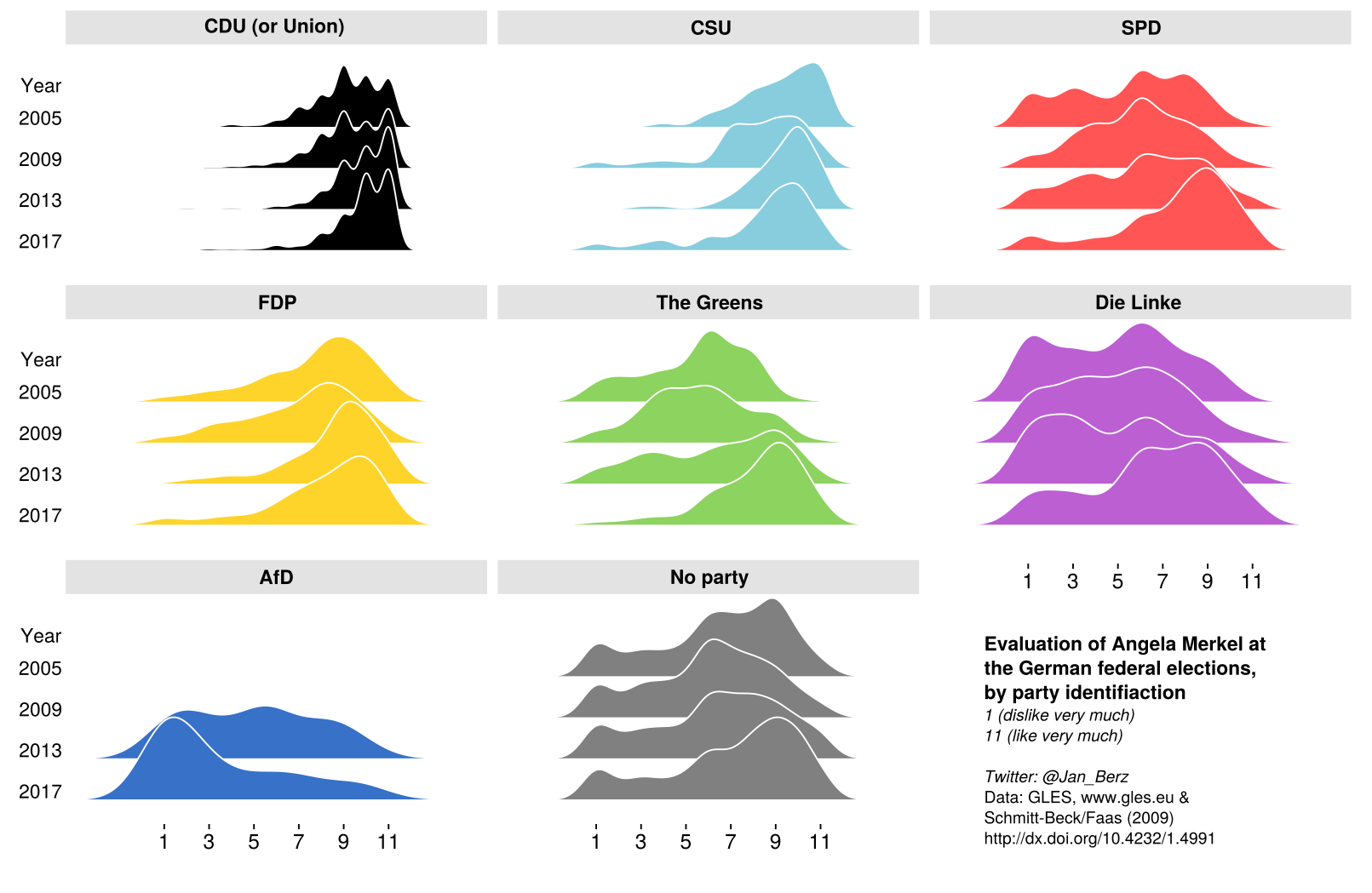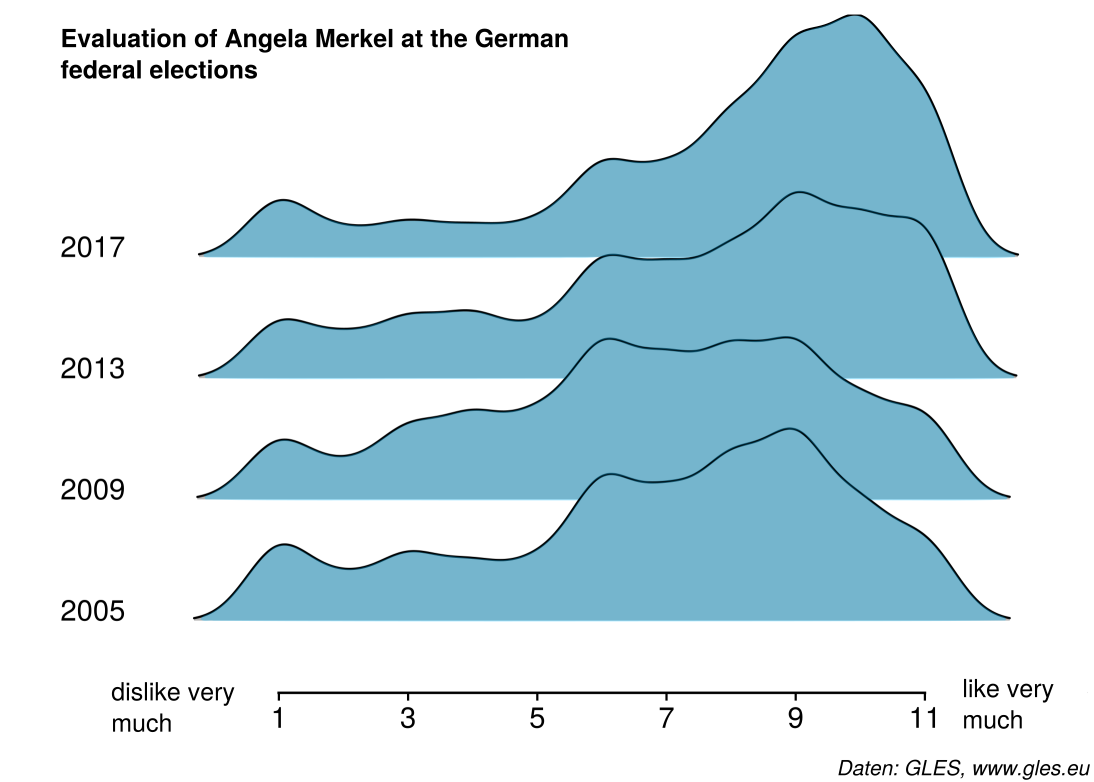In March 2018 the German parliament once again elected Angela Merkel as chancellor. In her fourth term Merkel leads another ‘grand coalition’ consisting of Union and the SPD. After the Union’s vote share declined by 8.7% in the recent federal election one would assume that Merkel had been less popular than in previous elections. Furthermore the radical right Alternative for Germany (AfD) frequently portraits Merkel negatively. How has the public perception of Merkel changed during her 12 years in office? I used data from the German Longitudinal Elections Study and from Schmitt-Beck & Faas (2009) to look at voters’ evaluation of Merkel over time.
The figure below shows how voters’ thermometer evaluations of Merkel are distributed by party identification and over time.

Distribution of voters’ thermometer evaluation of Merkel by party identification over time.
Clearly, Angela Merkel has become more popular over time, in particular among voters who identify with the SPD, the Greens and Die Linke. Among these parties the increase in positive feelings towards Merkel is considerable. With voters who identify with the CSU or the FDP Merkel has been about as popular as in previous elections, while individuals who identify with the CDU hold even more positive feelings towards Merkel than in 2005. The only group who holds overwhelmingly negative feelings are voters who identify with the AfD. If Merkel’s refugee policy had any effect on voters’ evaluation of her it seems to only have increased her popularity with most parts of the German society.
